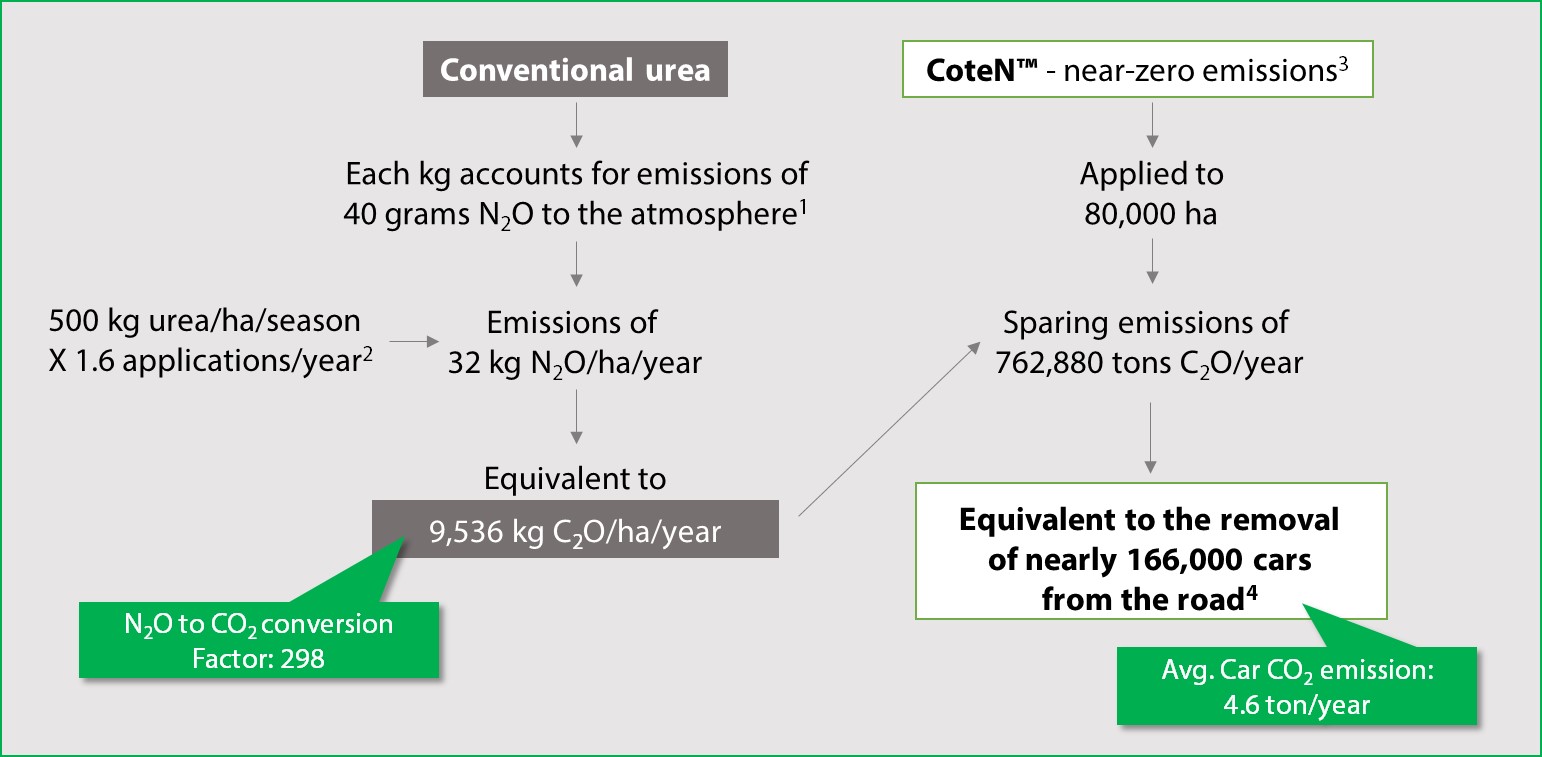Did you know? When you use Multicote™, you're not only providing your crops with optimal nutrition, you're also helping to protect our planet!
Application of nitrogen fertilizers is a must to grow agricultural crops. In traditional farming practices, nitrogen fertilization leads to emission of ammonia, which is a strong greenhouse gas.
To study the benefits of Multicote™ controlled release fertilizer in reducing the emissions of greenhouse gases related to nitrogen application, we set a trial in Haifa Group’s R&D greenhouse.
While the pots fertilized with conventional urea emitted about 15% of the applied nitrogen as gaseous ammonia, emissions from the Multicote™ pots were near zero.
Considering the amounts of nitrogen fertilizers applied to agricultural crops every year, and the fact that nitrous oxides and ammonia are 314 times more "effective" as greenhouse gas than CO2, this reduction of emissions has a dramatic meaning.
Let’s look at the figures:
Thus, beside the benefits of optimal plant nutrition, labor saving and reduced fertilization rates, Multicote™ Technology helps protecting our environment.

1 Typical value; actual value range: 3-104 grams
Source: Verhoeven, Elizabeth, et al. "N2O emissions from California farmlands: A review." California Agriculture 71.3 (2017): 148-159.
2 Estimation as the fall season is normally smaller than the Spring season
3 Proven by Derzi & Shaviv trial – Darzi, Ran, et al. "Evaluating How Enhanced Efficiency Nitrogen Fertilizers Improve Agricultural Sustainability: Greenhouse Multi-Phase Tracking System." Agriculture 13.7 (2023): 1384.
4 Based on car’s average CO2 emission of 4.6 tons per year.
To study the benefits of Multicote™ controlled release fertilizer in reducing the emissions of greenhouse gases related to nitrogen application, we set a trial in Haifa Group’s R&D greenhouse.
While the pots fertilized with conventional urea emitted about 15% of the applied nitrogen as gaseous ammonia, emissions from the Multicote™ pots were near zero.
Considering the amounts of nitrogen fertilizers applied to agricultural crops every year, and the fact that nitrous oxides and ammonia are 314 times more "effective" as greenhouse gas than CO2, this reduction of emissions has a dramatic meaning.
Let’s look at the figures:
- Each kilogram of conventional urea accounts for emissions of 40 grams N2O to the atmosphere1.
- Considering application of 50 kg urea per hectare per season and average of 1.6 applications per year2, fertilization with conventional urea yields emissions of 32 kg N2O per hectare per year.
- As greenhouse effect of N2O is 298 times larger than the effect of CO2, greenhouse gas emissions resulted from urea fertilization are equivalent to 9536 kg CO2 per hectare per year!
- Given that N2O emissions from CoteN™ (controlled release nitrogen, based on Multicote™ technology) are practically zero, the 80,000 hectares fertilized with CoteN™ spare emissions which are equivalent to 762,880 tons CO2 per year. This is equal to the removal of nearly 166,000 cars from the road4.
Thus, beside the benefits of optimal plant nutrition, labor saving and reduced fertilization rates, Multicote™ Technology helps protecting our environment.

1 Typical value; actual value range: 3-104 grams
Source: Verhoeven, Elizabeth, et al. "N2O emissions from California farmlands: A review." California Agriculture 71.3 (2017): 148-159.
2 Estimation as the fall season is normally smaller than the Spring season
3 Proven by Derzi & Shaviv trial – Darzi, Ran, et al. "Evaluating How Enhanced Efficiency Nitrogen Fertilizers Improve Agricultural Sustainability: Greenhouse Multi-Phase Tracking System." Agriculture 13.7 (2023): 1384.
4 Based on car’s average CO2 emission of 4.6 tons per year.




